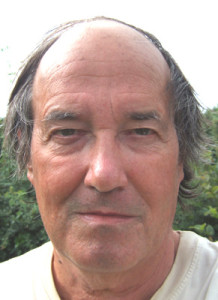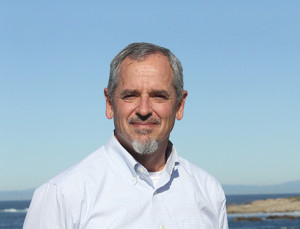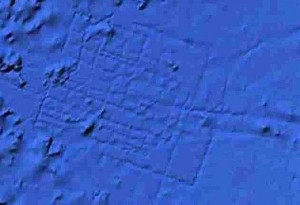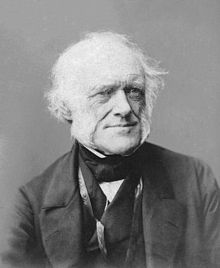catastrophism
O’Donoghue, Joseph
Joseph O’Donoghue is an Irish author who graduated from University College Cork with a BSc in geology. After a number of years he found that the work of a geologist had lost its appeal.  However, his deep-rooted interest in the mysteries and controversies associated with geology drove him to a private investigation of the subject.
However, his deep-rooted interest in the mysteries and controversies associated with geology drove him to a private investigation of the subject.
A review of O’Donoghue’s work commented “His research reinforced his impression that the geological establishment had bought too far into one theory of natural forces, to the extent that they had to close their eyes to any facts that contradicted it. As a result, they had made themselves blind to obvious and observable phenomena that their theory could not explain.
The theory in question is uniformitarianism, which is the idea that the forces at work in the natural world (like erosion) haven’t changed over time, and so everything we observe must have an explanation that is still at work. It also means that changes happen very slowly and gradually. On the surface, this seems logical, but problems arise because it simply cannot explain everything. There are some events we know happened, like the Ice Age, that are not explainable by this theory, or that can only have occurred by massive catastrophes.” (a)
O’Donoghue has commenced publishing an intended eight books with the series title of The Legend of Atlantis and the Science of Geology. The first two volumes, Atlantis and Catastrophe: Myth or Reality? [2100] and The Geology of Greece: Uniformity or Catastrophe? [2101] are now available.
In the first pages of Volume One he declared his support for the idea of Atlantis as an Atlantic continent. I totally disagree with that idea and my reasons can be read using the links here.
I expect that I shall be returning to Mr.O’Donoghue frequently, as I work my way through the first two volumes.
Radlof, Johann Gottlieb
Johann Gottlieb Radlof (1777-1829) was a German linguist, who from 1818 to 1822 held a professorship at the University of Bonn and from 1823 to 1826 he taught at the University of Berlin. His later research led to an investigation of catastrophes in the solar system and their effects on the Earth.
Radlof’ supported his claim of cataclysmic celestial encounters with some material [1438] later employed by Immanuel Velikovsky over a century later. Some commentators have mentioned how Velikovsky seemed reluctant to credit earlier writers, such as W.C.Beaumont and Radlof(a), with their contributions to the development of the theory of planetary Catastrophism. Others, such as Clube & Napier offer a more generous attribution(b).
(a) http://www.mythopedia.info/radlof.htm
(b) Johann Gottlieb Radlof – Atlantisforschung.de (atlantisforschung-de.translate.goog)
Friedell, Egon
Egon Friedell (1878-1938) was an Austrian philosopher with a passion for the theatre, both as a playwright and cabaret performer. I have taken the following passage (a machine translation) from the Atlantisforschung.de(a) website to explain Friedell’s view of Atlantis.
“In the first chapter of this work (” Die Mar der Weltgeschichte “) Friedell makes no secret of his affinity to the catastrophic view of earth and human history, where he is a convinced follower of the today in essential statements largely consensual considered scientifically untenable world ice doctrine (WEL) of the Viennese engineer Hanns Hörbiger (1860-1931). His ideas of a history of humanity dating back to the geological depths and of periodic cataclysms due to serial “moon entrapments” and “falls” are taken over practically in toto. This also applies to the ideas of Hörbiger and his epigones in matters of Atlantis, which he summarizes in a section of the chapter titled ” Hörbigers Atlantis ” – which can now be retrieved online for free. In conclusion, although Egon Friedell was not involved in the further development of WEL after Hörbiger’s death (such as Hans Schindler Bellamy and Philipp Fauth), but contributed to their popularization.”
Unfortunately, Friedell was Jewish, although he had converted to Protestantism, so when, on March 16th, 1938 a few days after Austria had been incorporated into the German Third Reich, two SA men came looking for him, he chose suicide rather than arrest.
(a) https://atlantisforschung.de/index.php?title=Egon_Friedell (Ger)
Jensen, John M. Jnr.
John M. Jensen Jnr. is an independent researcher living in Florida, who has published two books on  ancient civilisations and catastrophism. He has explored in depth some of the subjects touched on here. His first book was Ancient Canal Builders(a), which explores the extensive ancient canal network on the Atlantic and Gulf coasts of the United States and Mexico. His second offering is Earth Epochs(b) in which he recounts pre-historic global catastrophes, including the Younger Dryas Event of 12,900 YBP, and what he calls the Last Great Cataclysm of 5,000 YBP and the Earth Axial Tilt of 3448 YBP.>In a separate paper he claims that the final catastrophe led to the breaching of the Gibraltar and calendar changes among other effects.<
ancient civilisations and catastrophism. He has explored in depth some of the subjects touched on here. His first book was Ancient Canal Builders(a), which explores the extensive ancient canal network on the Atlantic and Gulf coasts of the United States and Mexico. His second offering is Earth Epochs(b) in which he recounts pre-historic global catastrophes, including the Younger Dryas Event of 12,900 YBP, and what he calls the Last Great Cataclysm of 5,000 YBP and the Earth Axial Tilt of 3448 YBP.>In a separate paper he claims that the final catastrophe led to the breaching of the Gibraltar and calendar changes among other effects.<
However, he seemed to go off the rails when he proposed that humans and dinosaurs co-existed and that the many thousands of dolmens found around the globe were not tombs but places of refuge from carnivorous dinosaurs. No, I’m not making this up. He deals with the subject in greater detail in the well-illustrated Earth Epochs(d). Both of his books can be downloaded for free.(a)(b)
Jensen does mention Atlantis, but without dealing with the matter in any great detail, it seems to me that he does accept its reality. I do not agree with all his ideas but I think his work should be read, including his blogs(c).
>In 2018, Jensen offered a possible submerged urban site “located about 130 miles west of Homestead, FL in the Gulf of Mexico. It is in the middle of the Florida Continental Shelf. Based on Google Earth measurements, (setting Google Earth coordinates to the satnav position of this image) at the same elevation, then measuring the relative length and width of this image, renders a size of some 18 miles in width and some 14 miles in breadth. Making this metropolis at least the size of Miami proper, and likely larger.” He claims that this apparent metropolis must be more than 10,000 years old, based on the rate of sea level change following the last Ice Age. He offered a link to a paper about the feature on the academia.edu website, but this is no longer there(e).<
(a) https://www.academia.edu/3779666/Ancient_Canal_Builders_-_Overview
(b) https://www.smashwords.com/books/view/536932
(c) https://earthepochs.blogspot.ie/
(d) https://www.academia.edu/11703016/Earth_Epochs_Overview
(e) Earth Epochs (Sept.18, 2018) *
Fritzius, Robert
Robert S. (Bob) Fritzius is a retired electrical engineer. He is also a Velikovskian catastrophist and additionally is the author of a short article on his website apparently supporting the Atlantis opinions of Olof Rudbeck(a) with the comment that “I see no fault with his thesis, and so far, no contradiction with what is known of Swedish ancient history and Baltic geography.”
*(a) https://www.shadetreephysics.com/vel/atlantis.htm*
Combes, Michel-Alain
Dr Michel-Alain Combes (1942- ) is a French amateur astronomer with a PhD in astronomy from the Université Pierre et Marie Curie (Paris VI). For forty years he has studied impact catastrophism and published his views in his book, La Terre Bombardée (The Bombarded Earth). His extensive website(a) endeavours to combine history, myth and science and includes a reference to Atlantis, as well as a kind mention of this site. His book can also be read on his site (French).
Université Pierre et Marie Curie (Paris VI). For forty years he has studied impact catastrophism and published his views in his book, La Terre Bombardée (The Bombarded Earth). His extensive website(a) endeavours to combine history, myth and science and includes a reference to Atlantis, as well as a kind mention of this site. His book can also be read on his site (French).
Combes further claims that although the legends of Phaeton and Typhon are usually treated as referring to different events that they are records of the same encounter with a comet in the late 13th century BC(c). He further suggested that “Surt, Sekhmet, Typhon, Phaeton, Wormwood, Anat and others are the various names of the comet, seen under different skies, at a time when many civilizations were already well established and thriving.”
Combes delivered a paper in English(b) to a 2008 Conference in Paris entitled; The Apocalypse of the Year 10,000 BC – Myth or Reality? It has been proposed that this event may have created the Carolina Bays and destroyed Atlantis as proposed by Otto Muck.
Furthermore, it has also been linked to the onset of the mini ice age known as the Younger Dryas as described by Firestone, West and Warwick-Smith in their book The Cycle of Cosmic Catastrophes[0110].
In 1992, Asteroid ‘3446 ombes’ was named in his honour.
(a) http://www.astrosurf.com/macombes/index.html (French) *
(b) https://www.2008-paris-conference.org/mapage9/macombes-younger-dryas-event-1-xx.html.pdf
Jaye, Michael
Michael Jaye is an Associate professor at the Naval Postgraduate School, in Monterey, California. He is a  confirmed catastrophist focused on cometary impacts. In a lecture to the Geological Society of America in 2011(a) he describes two major events in the Earth’s history that had profound effects on the earth and life on it. The first was a double impact 65 million years ago and is generally accepted to have led to the demise of the dinosaurs and the second 460,000 years ago.
confirmed catastrophist focused on cometary impacts. In a lecture to the Geological Society of America in 2011(a) he describes two major events in the Earth’s history that had profound effects on the earth and life on it. The first was a double impact 65 million years ago and is generally accepted to have led to the demise of the dinosaurs and the second 460,000 years ago.
In an April 2015 lecture entitled Resolving the Problem of Atlantis, he expands on his original ideas(b) introducing a third event 13,000 years ago when another cometary impact brought an enormous amount of water to earth, which linked together previously disconnected seas and oceans.
At this point, he introduces Atlantis or more correctly the alleged Google image of Atlantis in the Atlantic Ocean that Jaye now claims was the Plain of Atlantis. As I have previously stated, the image in question shows lines that would have been kilometres in width and could not have been streets and so are also too wide to have been the irrigation ditches described by Plato. The U.S. National Oceanic and Atmospheric Administration has also debunked the silly Atlantis claims generated by these images(e). However, the problem remains, that some people believe what they want to believe not what can be demonstrated.
shows lines that would have been kilometres in width and could not have been streets and so are also too wide to have been the irrigation ditches described by Plato. The U.S. National Oceanic and Atmospheric Administration has also debunked the silly Atlantis claims generated by these images(e). However, the problem remains, that some people believe what they want to believe not what can be demonstrated.
Jaye does not accept the explanation for these anomalous lines given by Google, joining conspiracy theorists in the process. I personally think that he should stick to geology and leave the subject of Atlantis to others.
Jaye has also given me a link(c) to a video of one of his lectures. In it, one of his claims is that most of the Earth’s water is the result of a collision with an icy comet around 12,800 years ago. However, the widespread distribution of fossil fish far exceeds the areas occupied by original unconnected bodies of water suggested by Jaye. This is just one of many inaccuracies offered by him. His ideas can be read on Graham Hancock’s website(d) and in his slender 2017 66-page book, The Worldwide Flood [1549].
Jaye has failed to explain how his claim of a relatively recent acquisition by the Earth of most of its water, can account for the recurring Ice Ages that our planet has endured over many millions of years. Ice Age theory is well established, but according to him, the Earth would not have had enough water over that timespan to produce the glaciers that enveloped large areas of the globe, sometimes to a depth of 3 or 4 km, leading to the measurable isostatic rebound we still experience today.>>Incidentally, where I’m sitting right now had a glacier of around a kilometre thick overhead during the last Ice Age and is thought to be the last part of Ireland to be deglaciated.<<
!
Jaye also published a paper entitled Mu and the Worldwide Flood, in which he found some support for the late Flood theory.(g)
Carl Feagans, an ardent sceptic, has published a lengthy refutation of Jaye’s theories, in particular his idea of a global flood.(f)
(b) The Explorers Club – Events – NYC – Public Lecture Series feat. Michael Jaye (archive.org)
(c) https://vimeo.com/126026401
(d) https://grahamhancock.com/jayem2/
(e) https://oceanservice.noaa.gov/facts/atlantis.html
(f) https://ahotcupofjoe.net/2019/11/the-pseudoarchaeology-of-michael-jayes-worldwide-flood/
(g) Mu and the Worldwide Flood | My-Mu.com Guest Blog (archive.org)
Pilgram, Wilhelm
 Wilhelm Pilgram (1934- ) is a German doctor of medicine by profession, but he is also a keen student of catastrophism. This led him to follow the views of the Tollmanns and consequently he supports the idea of Atlantis situated on the Mid Atlantic Ridge and destroyed around 10,000 years ago by the impact of a comet(a).
Wilhelm Pilgram (1934- ) is a German doctor of medicine by profession, but he is also a keen student of catastrophism. This led him to follow the views of the Tollmanns and consequently he supports the idea of Atlantis situated on the Mid Atlantic Ridge and destroyed around 10,000 years ago by the impact of a comet(a).
(a) https://atlantisforschung.de/index.php?title=Dr._Wilhelm_Pilgram
Lyell, Charles
Charles Lyell (1797-1875) was Scottish-born lawyer and the leading British geologist of his day. He  was a enthusiastic proponent of uniformitarianism as expressed in his best known book, Principles of Geology. Daniel Wilson quoted Lyell as concluding that “the entire evidence is adverse to the idea that the Canaries, the Madeiras, and the Azores, are surviving fragments of a vast submerged island, or continuous area of the adjacent continent.” From the same book, R.E. Anderson quotes[1486] Lyell as confessing a temptation to ”accept the theory of an Atlantis island in the northern Atlantic” [1472.141]. He expressed similar sentiments in his Elements of Geology [2090.363].
was a enthusiastic proponent of uniformitarianism as expressed in his best known book, Principles of Geology. Daniel Wilson quoted Lyell as concluding that “the entire evidence is adverse to the idea that the Canaries, the Madeiras, and the Azores, are surviving fragments of a vast submerged island, or continuous area of the adjacent continent.” From the same book, R.E. Anderson quotes[1486] Lyell as confessing a temptation to ”accept the theory of an Atlantis island in the northern Atlantic” [1472.141]. He expressed similar sentiments in his Elements of Geology [2090.363].
This view was contradicted by later geologists in the 19th and early 20th centuries, who even suggested landbridges across the Atlantic or a series of islands offering stepping-stones between the Old World and the Americas. Today, supporters of an Atlantic Atlantis offer less dramatic theories suggesting, the Canaries, Azores or Madeiras are remnants of Plato’s Island.
>>2024 saw the publication of the first two volumes [2100/1] of Joseph O’Donoghue’s eight-book series, The Legend of Atlantis & the Science of Geology in which he consistently criticises the work of Lyell and by extension current supporters of his uniformitarianism. My observation is that O’Donoghue overstates the level of support for Lyell’s ideas today, as the acceptance of catastrophism seems to have gained growing support ever since Immanuel Velikovsky published Worlds In Collision and Earth in Upheaval [037/8], which, athough flawed, kick-started a renewed interest in catastrophism.<<
Principles of Geology – Available online: https://wallace-online.org/converted/pdf/1835_Lyell_WS2.1.pdf (Fourth Edition vol 1, 1835) (4 volumes, change pdf number)
Elements of Geology – Available online: Elements of geology : Lyell, Charles, Sir, 1797-1875 : Free Download, Borrow, and Streaming : Internet Archive
Palmer, Trevor
Trevor Palmer (1944- ) is an English Professor of Biology now living in Scotland. Apart from his day job of enzymology and the study of genetic  disorders, which led to an interest in evolution, which in turn brought him to research catastrophism, he has written several books on these subjects, including >Controversy Catastrophism and Evolution [1971]<Perilous Planet Earth [888], which places today’s “concern about the threat to Earth from asteroids and comets within a historical context.” He devotes two chapters of this comprehensive work to the subject of Atlantis, in which he reviews (chap.13) some of the late 19th and early 20th century theories as well as more recent developments (chap.28) exposing many of the weaknesses in the arguments on offer.
disorders, which led to an interest in evolution, which in turn brought him to research catastrophism, he has written several books on these subjects, including >Controversy Catastrophism and Evolution [1971]<Perilous Planet Earth [888], which places today’s “concern about the threat to Earth from asteroids and comets within a historical context.” He devotes two chapters of this comprehensive work to the subject of Atlantis, in which he reviews (chap.13) some of the late 19th and early 20th century theories as well as more recent developments (chap.28) exposing many of the weaknesses in the arguments on offer.
>A lecture with the same title as the book was delivered to the Society for Interdisciplinary Studies (SIS) in September 2004 and is now available online(m).<
While Palmer does not express any personal views on the subject, it is noteworthy that he wrote an introduction to the 2005 Barnes & Noble edition of Lewis Spence’s The History of Atlantis. After a brief look at Spence’s life, Palmer gives an overview of the principal strands of Atlantology today and concluded that many of the issues debated 80 years ago are still unresolved and for that reason, Spence’s book continues to be worth studying.
Palmer wrote a short paper(a) in 1987 in which he was cautiously sceptical of the Atlantis story, particularly the possibility that it was destroyed during the Late Pleistocene era, with which I concur. He also touched on the subject of the Carolina Bays, apparently adding support to the now-discredited idea that they were created by wind action. I expect that he may have modified his views by now. However, the US Geological Survey is now (2021) identifying the bays as ‘relict thermokarst lakes’.(h)
Palmer presented a paper entitled Catastrophes: The Diluvial Evidence at the Society for Interdisciplinary Studies (SIS) Silver Jubilee Conference in September 1999.(i) He also addressed the SIS in 2004 on the background to his book published the previous year(d).
Palmer published two similar papers in 2010(b) and 2012(e) on the history of catastrophism and the ensuing debates from the time of Velikovsky until the present, when catastrophism has greater acceptance and which now offers a variety of competing ideas regarding the number, source, date and consequences of specific catastrophes.
In the second paper delivered to the Quantavolution Conference on Naxos, he offers the interesting observation that “In science, unlike religion, the great revelations lie in the future; the coming generations are the authorities, and the pupil is greater than the master if he has the gift to see things anew.”
Palmer has also written a 2018 review(c) of Perilous Planet Earth in light of developments since it was first published.
In 2009, Palmer published an interesting paper on the Black Sea and its dramatic connection with the Mediterranean (9,400 years ago) and how it may have influenced the creation of flood myths in the region(l). “The various groups currently investigating the area are agreed that cataclysmic flooding took place during the Late Pleistocene, but remain divided about whether similar floods also occurred during the Holocene. Eye-witness accounts of catastrophic floods in the Black Sea basin at either time could have been passed on to future generations, eventually giving rise to the later Mesopotamian legend of Uta-napishtim and, subsequently, the Biblical story of Noah. However, in the absence of any direct evidence of cultural transmission, that can presently only be regarded as plausible speculation.”
Palmer and Gunnar Heinsohn have been debating Heinsohn’s claim that our chronology of the 1st millennium AD is deeply flawed, on the Q-Mag website(f). Palmer has also written a lengthy paper supporting his views on the matter(g).
In addition, Palmer has also examined the ancient Greek and Roman historians “to test whether they present a picture of the past consistent with that revealed by archaeology, particularly inscriptions indicating sequences and timescales, and also to see the extent to which they support, or otherwise, the orthodox chronology and a number of representative alternative chronologies.” He concluded that there was ‘general accuracy’(j). He subsequently expanded on this paper to include a review of the chronology of the 1st millennium AD(k).
(a) See Archive 3026
(c) Archive 4971 | (atlantipedia.ie)
(d)Archive 4972 | (atlantipedia.ie)
(e) Archive 4973 | (atlantipedia.ie)
(f) https://www.q-mag.org/_search.html?req=Trevor+Palmer
(g) https://www.academia.edu/37544096/Writers_and_Re_Writers_of_First_Millennium_History_Second_draft_October_2018_
(h) https://earthobservatory.nasa.gov/images/147904/ice-age-carolinas
